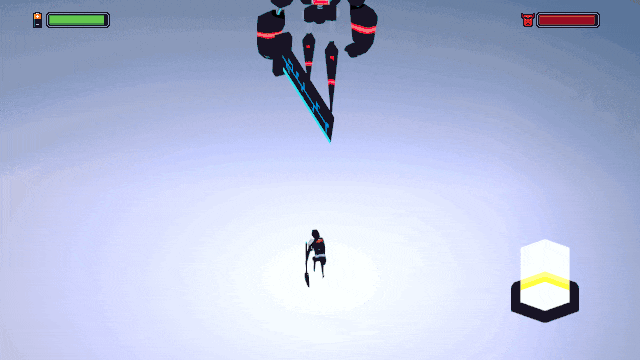Ludev Dan 39 Mac OS
- Ludev Dan 39 Mac Os X
- Ludev Dan 39 Mac Os Pro
- Ludev Dan 39 Mac Os Catalina
- Ludev Dan 39 Mac Os Download
Oracle Solaris Operating System. JDK 7 Installation on the Oracle Solaris OS - both 32-bit and 64-bit; JRE 7 Installation on the Oracle Solaris OS - both 32-bit and 64-bit; Server JRE 7 Installation on the Oracle Solaris OS - 64-bit; In order to run Java applets within a browser, you must install the JRE plugin manually. Applications written with Carbon were initially able to run natively on both classic Mac OS and Mac OS X, although this ability was later dropped as Mac OS X developed. Carbon was not included in the first product sold as Mac OS X: the little-used original release of Mac OS X Server 1.0, which also did not include the Aqua interface.
I tried to submit basically this same hint a little while ago... I thought I discovered it... now I feel a bit foolish... lol.
When I used this hint I did it a bit differently leaving out the . Also, this tip seems to be for Jaguar... in Panther the file to is located in not in
Why did I use this? I needed to use it when a software demo messed up my password (no idea how) and left me locked out of my account... my ONLY account. I did not have my installation disks with me and the only tip I could find about how to get in (I had to use a *gag* windows box to search) did not work in my case (it involves using SystemStartup to get things running but if you are running a web server, the startup will go into a loop when trying to load it). Without this way of getting in, I would have been in bad shape (I need my Mac for work so not getting in was not an option).
FYI... the above hint doesn't mention it but in my case the primary account (mine) was fine after I booted in, created a new account and reset the password on my original account.
---
macosxhints.com is one reason PC users should switch to a Mac.
I’ve recently started diving into home automation stuff, and of course immediately ran into issues. I purchased a z-wave water sensor and planned to use Home Assistant to monitor the sensor and send me alerts (via pushover) if it detects water. While getting HA installed was quick and easy, the trouble began when I tried to actually read from the sensor. I could see in the OZW_Log.txt log file that the system was receiving data, but the HA log had no event information.
Ludev Dan 39 Mac Os X
After a bunch of searching, I came across a post talking about using open-zwave-control-panel (ozwcp) to diagnose and configure z-wave devices. Awesome! Sadly, the documentation for this project is lacking, and it took a bit of trial and error to figure out the right steps to get ozwcp build, let alone run. Eventually I figured it out, reconfigured my sensor and everything worked. So to save others the frustration of trying to build ozwcp, I’ve got a quick and simple tutorial for you!
UPDATE: There’s a docker image that’s only slightly out of date, I suggest trying that first before going to the effort of compiling ozwcp. If you don’t have docker installed, follow one of the many tutorials out there, then run this command (where /dev/ttyUSB0 is your zwave controller):
docker run -p 8008:8008 –device /dev/ttyUSB0 openzwave/openzwave-control-panel &>/dev/null &

And now back to our regularly scheduled programming:
Please note, these instructions have only been tested on Raspbian 8 (jessie) on a Raspberry Pi 3. Your milage may vary! All commands are run as root, because I’m lazy.
First, install some (probably) important libraries:
apt-get update
apt-get install libgnutls28-dev libgnutlsxx28
Ludev Dan 39 Mac Os Pro
Download, build and install libmicrohttpd
cd
wget ftp://ftp.gnu.org/gnu/libmicrohttpd/libmicrohttpd-0.9.19.tar.gz
tar zxvf libmicrohttpd-0.9.19.tar.gz
mv libmicrohttpd-0.9.19 libmicrohttpd
cd libmicrohttpd
./configure
make
make install
Download and build the open-zwave library
cd
git clone https://github.com/OpenZWave/open-zwave.git
cd open-zwave
make
Download open-zwave-control-panel
cd
git clone https://github.com/OpenZWave/open-zwave-control-panel.git
cd open-zwave-control-panel
Open the Makefile and find the following line:
Ludev Dan 39 Mac Os Catalina
OPENZWAVE := ../
LIBMICROHTTPD := -lmicrohttpd
Change it to:
OPENZWAVE := ../open-zwave
LIBMICROHTTPD := /usr/local/lib/libmicrohttpd.a
Build ozwcp
make
ln -sd ../open-zwave/config
And finally, run it!

Ludev Dan 39 Mac Os Download
./ozwcp -p 8888
Now you can open http://your_system:8888 in a browser to start using the open-zwave-control-panel!